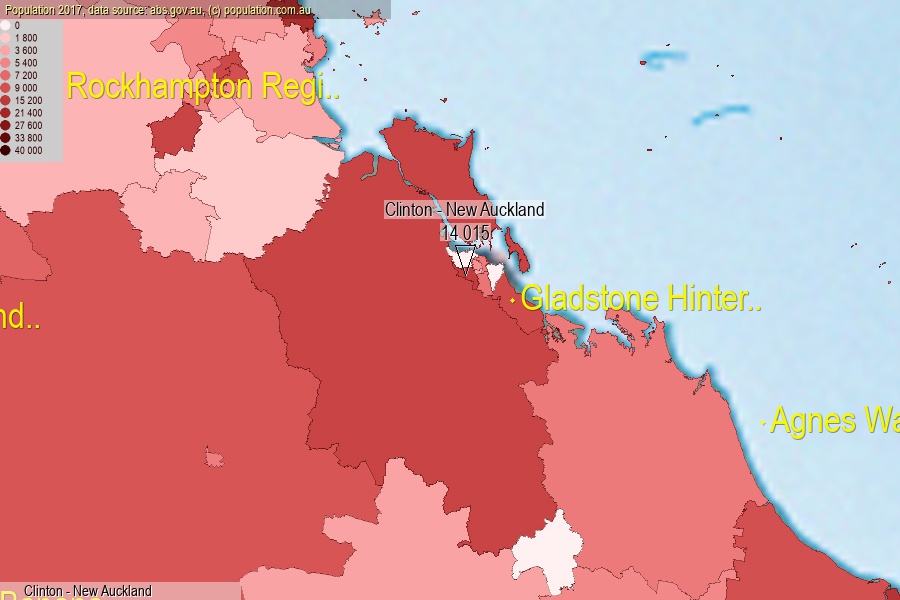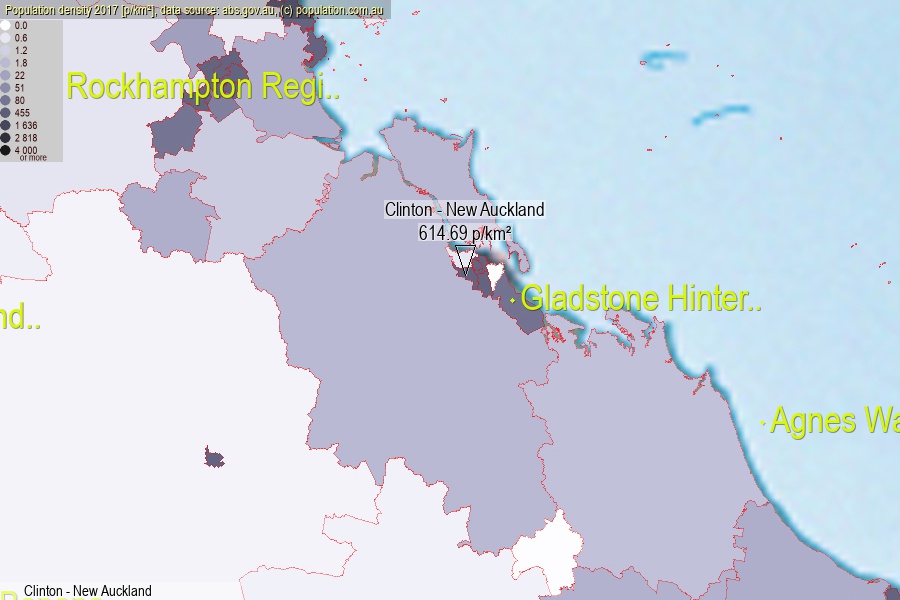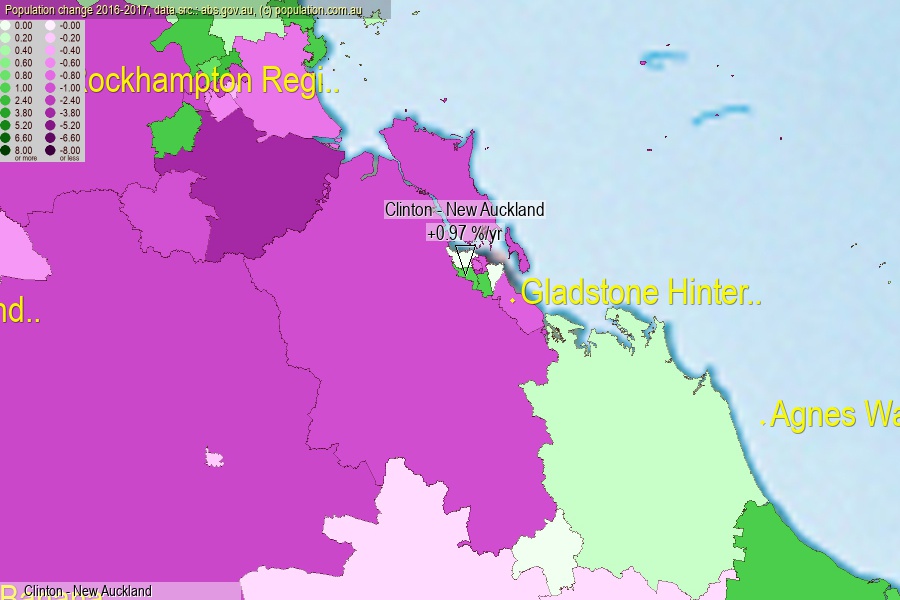 population.com.au
population.com.auLast official estimated population of Clinton - New Auckland (as Statistical Area Level 2) was 14 015 people (on 2017-06-30)[2]. This was 0.06% of total Australian population and 0.281% of QLD population. Area of Clinton - New Auckland is 22.80 km², in this year population density was 614.69 p/km² . If population growth rate would be same as in period 2016-2017 (+0.97%/yr), Clinton - New Auckland population in 2025 would be 15 143. [0]



Click to enlarge. Clinton - New Auckland is located in the center of the images.
Population [people], population density [p./km²] and population change [%/year] [2]
View borders » (new window) [4]
[2001-2002] +5.18 %/Yr.
[2002-2003] +6.57 %/Yr.
[2003-2004] +6.15 %/Yr.
[2004-2005] +3.44 %/Yr.
[2005-2006] +3.94 %/Yr.
[2006-2007] +3.26 %/Yr.
[2007-2008] +2.58 %/Yr.
[2008-2009] +2.19 %/Yr.
[2009-2010] +0.50 %/Yr.
[2010-2011] +1.97 %/Yr.
[2011-2012] +4.52 %/Yr.
[2012-2013] +7.15 %/Yr.
[2013-2014] +5.85 %/Yr.
[2014-2015] +3.65 %/Yr.
[2015-2016] -0.58 %/Yr.
[2016-2017] +0.97 %/Yr.
[0] Calculated with linear interpolation from officially estimated population
[1] Read more about SA2 and Australian Statistical Geography Standard (ASGS) on abs.gov.au
[2] Population data from Australian Bureau of Statistics (Population and density: 2017; change: 2016-2017)
[3] Digital Boundaries: Australian Statistical Geography Standard (ASGS) 2016.
[4] Border coordinates are simplifyed using Ramer-Douglas-Peucker algorithm.